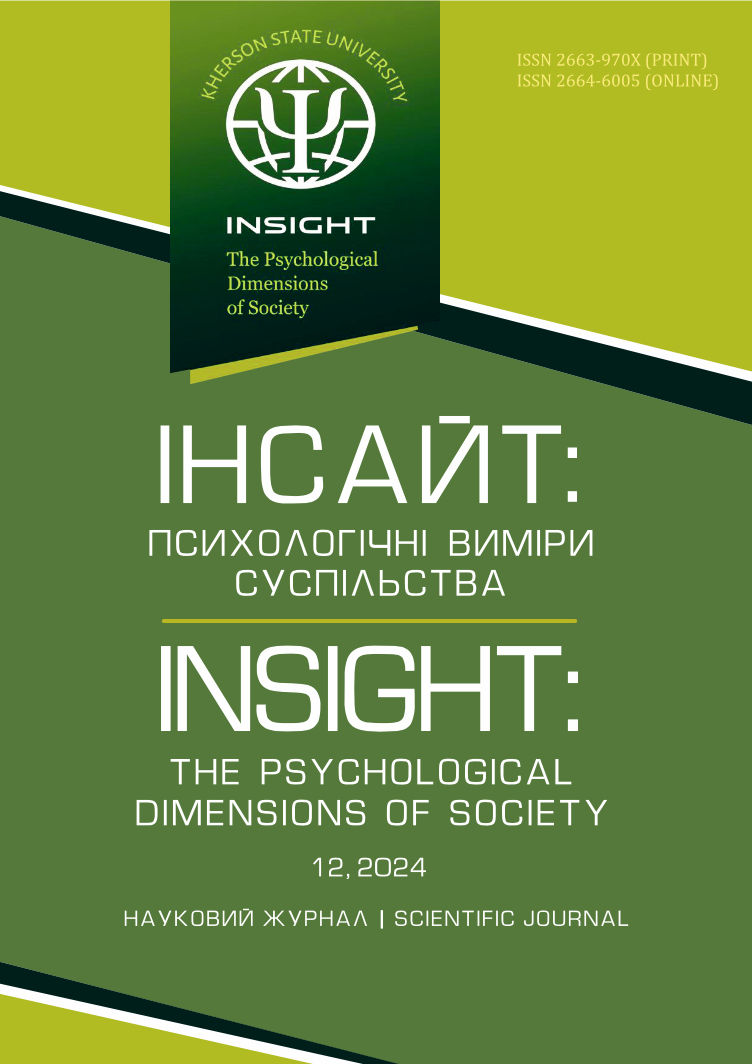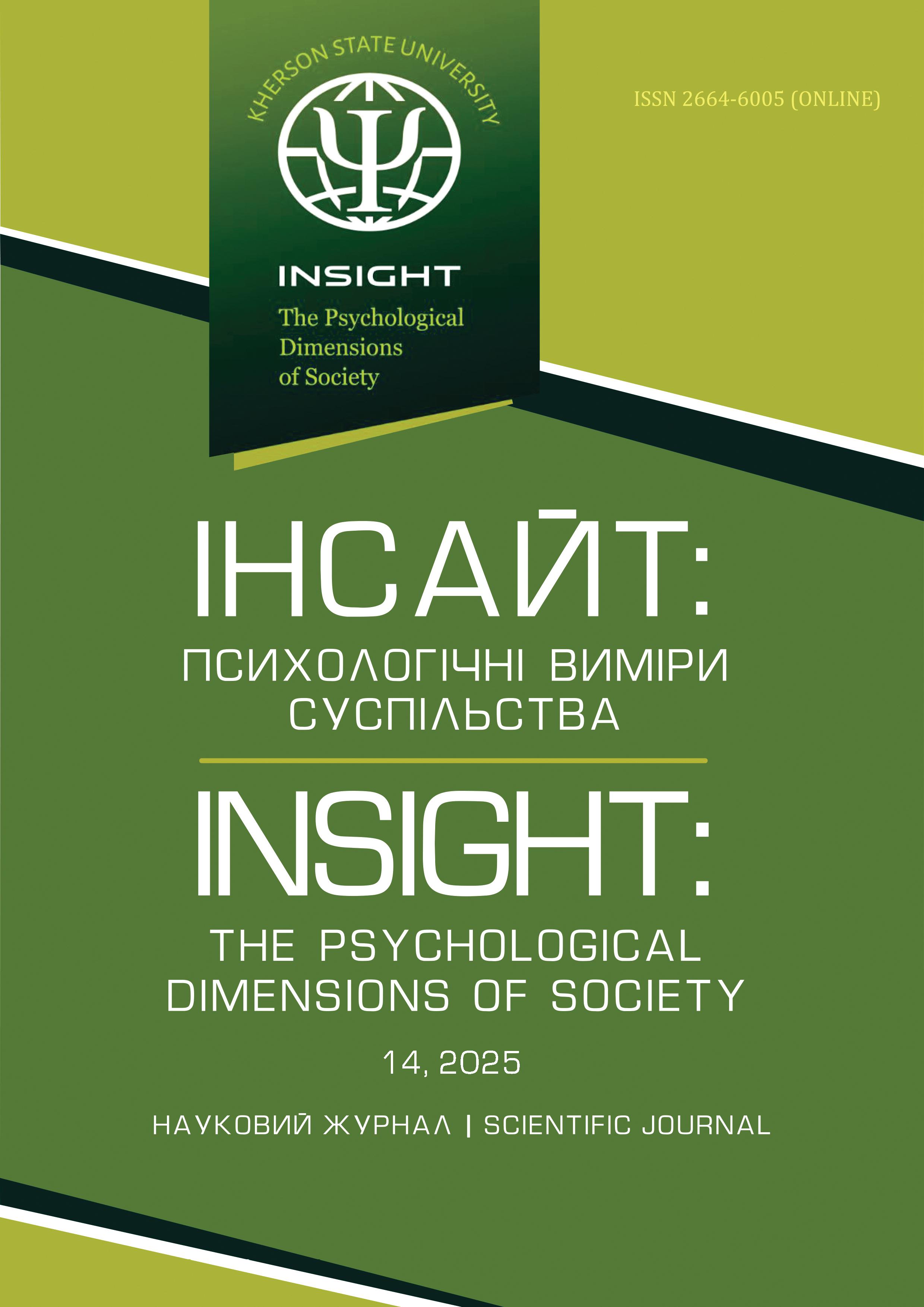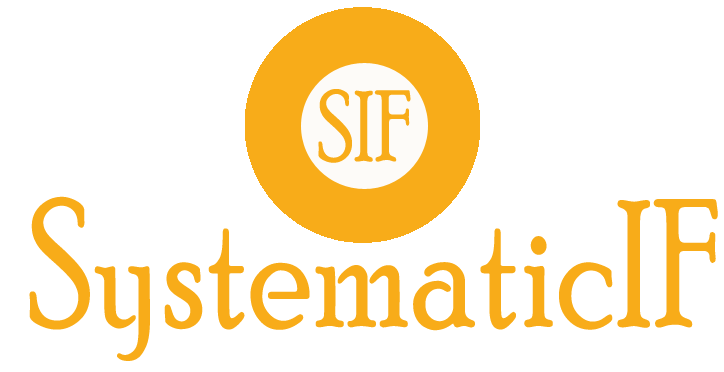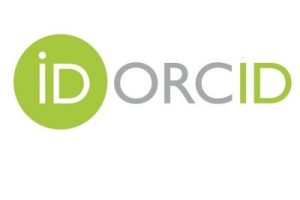Особливості атрибутивного стилю осіб з алекситимією та психопатією
Анотація
Метою дослідження є визначення особливостей атрибутивного стилю осіб з алекситимією та психопатією. Методи. Теоретичні: аналізування та узагальнення теоретичних положень, дотичних до досліджуваної проблеми, на основі огляду наукових джерел і даних досліджень; емпіричні: опитувальник атрибутивного стилю М. Селігмана (Seligman 2006), Торонтська алекситемічна шкала (TAS-26) (Taylor et al. 1985), опитувальник на виявлення психопатії М. Левенсона (Levenson et al. 1995); математико-статистичні методи. Результати. Досліджено взаємозв’язки алекситимії, психопатичних проявів особистості та атрибутивного стилю. Встановлено зворотну кореляцію алекситимії із загальним рівнем оптимізму (R = – .32; p < .010). З’ясовано, що первинний фактор психопатії має слабку, але значущу пряму кореляцію з алекситимією (R = .20; p < .050). Вторинна психопатія має високий показник прямої кореляції з алекситимією (R = .46; p < .010). Визначено, що первинний фактор психопатії має прямий зв’язок із загальним рівнем оптимізму (R = .29; p < .010). Констатовано зворотну кореляцію між вторинною психопатією та загальним рівнем оптимізму (R = – .28; p < .010). Виявлено численні значущі обернені кореляції окремих когнітивних настановлень, які складають оптимістичний атрибутивний стиль, з алекситимією та вторинним фактором психопатії. Дискусія і висновки. Визначено особливості атрибутивного стилю осіб з алекситимією та психопатією, з’ясовано зв’язки психологічних конструктів зі складовими атрибутивного стилю, показано наявність зв’язку між алекситимією та первинною і вторинною психопатією. З’ясовано, що для людей з алекситимією та вторинною психопатією характерний песимістичний атрибутивний стиль, тоді як особи з первинною психопатією характеризуються оптимістичним атрибутивним стилем. Атрибутивний стиль людей із вторинною психопатією є переважно депресогенним, на відміну від осіб із первинною психопатією, у яких така особливість не спостерігається. Результати дослідження можуть бути корисні в контексті вибору стратегій психокорекційного впливу на осіб з алекситимією та психопатією.
Завантаження
Посилання
Alex J., Bhatia J. K., Marakwar A. Optimism and PTSD: A Review. International Journal of Indian Psychology. 2024. Vol. 12(1). P 246–254. URL: https://ijip.in/articles/optimism-and-ptsd/
Almansa J. F. F., Trivilin T., Hutz, C. S., de Almeida R. M. M., Vazquez, A. C. S., de Freitas, C. P. P. Mental health of Brazilian students during the COVID-19 pandemic: the role of gratitude, optimism, and hope in reducing anxiety. Trends in psychiatry and psychotherapy. 2024. Vol. 46, e20220496. P. 1–9. https://doi.org/10.47626/2237-6089-2022-0496
Batky B. D., Mendez B., Bontemps A., Salekin R. T. Psychopathy measurement practices moderate psychopathy’s association with anxiety and depression: A comprehensive meta-analysis. Clinical Psychology Review. 2024. Vol. 111, 102448. https://doi.org/10.1016/j.cpr.2024.102448
Boccio C. M., Beaver K. M. Psychopathic personality traits, intelligence, and economic success. The Journal of Forensic Psychiatry & Psychology. 2015. Vol. 26(4). P. 551–569. https://doi.org/10.1080/14789949.2015.1037330
Corso C. B., Hoppe R., Kliewer W., Wike T., Winter M. A. Emotion Regulation in Families: Exploring the Link between Parent-Child Alexithymia and Child Post-Traumatic Stress Symptoms Amidst the COVID-19 Pandemic. Child Psychiatry & Human Development. 2024. P. 1–12. https://doi.org/10.1007/s10578-024-01728-9
Estévez A., Jauregui P., Momeñe J., Etxaburu N., Lopez-Gonzalez H. Hopelessness in gambling disorder: relationship with affect, alexithymia and gambling motives in young adults. International Gambling Studies. 2022. Vol. 23(3), P. 418–432. https://doi.org/10.1080/14459795.2022.2152468
Fan C., Sun J., Chen X., Luo W. Brain Stimulation of Dorsolateral Prefrontal Cortices Influences Impulsivity in Delay Discounting Choices. Journal of Cognitive Neuroscience. 2024. Vol. 36(9). P. 1–15. https://doi.org/10.1162/jocn_a_02185
Falkenbach D. M., McKinley S. J., Roelofs Larson F. R. Two sides of the same coin: Psychopathy case studies from an urban police department. Journal of forensic psychology research and practice. 2017. Vol. 17(5). P. 338–356. https://doi.org/10.1080/24732850.2017.1378860
Furnham A., Robinson C. Correlates of self-assessed optimism. Current Research in Behavioral Sciences. 2023. Vol. 4, 100089. https://doi.org/10.1016/j.crbeha.2022.100089
Gurkan Z. M., Sengul Y., Ekiz T. G., Pak A. T. Effect of alexithymia and difficulty of emotion regulation, neuroticism, low extraversion, and suicidality on quality of life in epilepsy. Epilepsy & Behavior. 2022. Vol. 135, 108887. https://doi.org/10.1016/j.yebeh.2022.108887
Hamel C., Rodrigue C., Clermont C., Hébert M., Paquette L., Dion J. Alexithymia as a mediator of the associations between child maltreatment and internalizing and externalizing behaviors in adolescence. Scientific reports. 2024. Vol. 14(1), 6359. https://doi.org/10.1038/s41598-024-56909-2
Hassall J., Boduszek D., Dhingra K. Psychopathic traits of business and psychology students and their relationship to academic success. Personality and Individual differences. 2015. Vol. 82. P. 227–231. https://doi.org/10.1016/j.paid.2015.03.017
Hou C., Shi H., Ma Y., Chou J. Heterogeneity of alexithymia subgroups: A factor mixture modelling approach. European Journal of Psychological Assessment. Advance online publication. 2024. https://doi.org/10.1027/1015-5759/a000828
Howe J., Falkenbach D., Massey C. The relationship among psychopathy, emotional intelligence, and professional success in finance. International Journal of Forensic Mental Health. 2014. Vol. 13(4). P. 337–347. https://doi.org/10.1080/14999013.2014.951103
Jonason P. K., Krause L. The emotional deficits associated with the Dark Triad traits: Cogntive empathy, affective empathy and alexithymia. Personality and Individuals Differences. 2013. Vol. 55(5), P. 532–537. https://doi.org/10.1016/j.paid.2013.04.027
Jonason P. K., Foster J. D., Csathó Á., Gouveia V. Expectancy biases underneath the Dark Triad traits: Associations with optimism, pessimism, and hopelessness. Personality and Individual Differences. 2018. Vol. 134. P. 190–194. https://doi.org/10.1016/j.paid.2018.06.020
Khan A. N., Jaffee S. R. Alexithymia in individuals maltreated as children and adolescents: a meta‐analysis. Journal of child psychology and psychiatry. 2022. Vol. 63(9). P. 963–972. https://doi.org/10.1111/jcpp.13616
Kleiman E. M., Miller A. B., Riskind J. H. Enhancing attributional style as a protective factor in suicide. Journal of Affective Disorders. 2012. Vol. 143(1–3). P. 236–240. https://doi.org/10.1016/j.jad.2012.05.014
Lander, G. C., Lutz-Zois, C. J., Rye, M. S., Goodnight, J. A. The differential association between alexithymia and primary versus secondary psychopathy. Personality and Individual Differences. 2012. Vol. 52. P. 45–50. https://doi.org/10.1016/j.paid.2011.08.027
Lee J. E., Choi B., Lee Y., Kim K. M., Kim D., Park T. W., Lim M. H. The relationship between posttraumatic embitterment disorder and stress, depression, self-esteem, impulsiveness, and suicidal ideation in Korea soldiers in the local area. Journal of Korean Medical Science. 2023. Vol. 38(1), e15. https://doi.org/10.3346/jkms.2023.38.e15
Levenson M. R., Kiehl K. A., Fitzpatrick C. M. Assessing psychopathic attributes in a noninstitutionalized population. 1995. Journal of Personality and Social Psychology. Vol. 68(1), P. 151–158. https://doi.org/10.1037/0022-3514.68.1.151
Lilienfeld S. O., Latzman R. D., Watts A. L., Smith S. F., Dutton K. Correlates of psychopathic personality traits in everyday life: Results from a large community survey. Frontiers in psychology. 2014. Vol. 5. P. 740. https://doi.org/10.3389/fpsyg.2014.00740
Liu L., Sun Y., Wang Y., Luo N., Bai R., Pan M., Song Y., Zhang Y., Wu H. Impact of alexithymia on suicidal ideation among patients with ovarian cancer: A moderated mediation model of self-perceived burden and general self-efficacy. Supportive Care in Cancer. 2023. Vol. 31(3), P. 177. https://doi.org/10.1007/s00520-023-07610-z
Luminet O., Nielson K. A., Ridout N. Having no words for feelings: alexithymia as a fundamental personality dimension at the interface of cognition and emotion. Cognition and Emotion. 2021. Vol. 35(3), P. 435–448. https://doi.org/10.1080/02699931.2021.1916442
Mehmood A., Farooq Z., Hasnain S. F. Unravelling the mind of young adult offenders: mediating role of impulsivity in relationship between psychopathy and criminal thinking. The Journal of Forensic Psychiatry & Psychology. 2024. Vol. 35(1), P. 70-84. https://doi.org/10.1080/14789949.2023.2288327
Mohamed, B. E. S., Ahmed, M. G. A. E. Emotional intelligence, alexithymia and suicidal ideation among depressive patients. Archives of Psychiatric Nursing. 2022. Vol. 37(12). P. 33–38. https://doi.org/10.1016/j.apnu.2021.12.002
Pitcho S., Heller O., Chun Y., Schwartz-Tayri T. M., Grinstein-Weiss M. Optimism in dire times: The buffering role of optimism in the relationship between food insecurity and mental health during the COVID-19 pandemic. Heliyon. 2024. Vol. 10(9). e30385. https://doi.org/10.1016/j.heliyon.2024.e30385
Рreece D., Gross J. Conceptualizing alexithymia. Personality and Individual Differences. 2023. Vol. 215, 112375. https://doi.org/10.1016/j.paid.2023.112375
Preece D. A., Mehta A., Becerra R., Chen W., Allan A., Robinson K., Boyes M., Hasking P., Gross J. J. Why is alexithymia a risk factor for affective disorder symptoms? The role of emotion regulation. Journal of Affective Disorders. 2022. Vol. 296, P. 337–341. https://doi.org/10.1016/j.jad.2021.09.085
Seligman M. Learned Optimism. How change your mind and your life. New York: Vintage books. 2006. 336 p. URL: https://www.savetovalistebalans.rs/wp-content/uploads/2021/06/Learned-Optimism-by-Seligman-Martin.pdf
Spurk D., Keller A. C., Hirschi A. Do bad guys get ahead or fall behind? Relationships of the dark triad of personality with objective and subjective career success. Social psychological and personality science. 2016. Vol. 7(2). P. 113–121. https://doi.org/10.1177/1948550615609735
Tang W. C., Lin M. P., Wu J. Y. W., Lee Y. T., You J. Mediating role of depression in the association between alexithymia and nonsuicidal self-injury in a representative sample of adolescents in Taiwan. Child and adolescent psychiatry and mental health. 2022. Vol. 16(1). P. 43. https://doi.org/10.1186/s13034-022-00477-8
Taylor G. J., Ryan D., Bagby M. (1985). Toward the development of a new self-report alexithymia scale. Psychotherapy and psychosomatics. 1985. Vol. 44(4), P. 191-199. https://10.1159/000287912
Ullrich S., Farrington D. P., Coid J. W. Psychopathic personality traits and life-success. Personality and Individual Differences. 2008. Vol. 44(5). P. 1162–1171. https://doi.org/10.1016/j.paid.2007.11.008
van Sleeuwen C., van Zuiden M., Koch S. B., Frijling J. L., Veltman D. J., Olff M., Nawijn L. How does it feel? An exploration of neurobiological and clinical correlates of alexithymia in trauma-exposed police-officers with and without PTSD. European journal of psychotraumatology. 2023. Vol. 14(2), 2281187. https://doi.org/10.1080/20008066.2023.2281187
Wallace L., Fido D., Sumich A. L., Heym N. A systematic review on the current conceptualisations of successful psychopathy. Forensic Science International: Mind and Law. 2022. Vol. 3. 100076. https://doi.org/10.1016/j.fsiml.2022.100076
Автори, які публікуються у науковому журналі, погоджуються з наступними умовами:
· Всі наукові праці можуть вільно копіюватися і поширюватися на будь якому носії і в будь якому форматі, за умови зазначення покликань на вихідні дані наукової праці.
· Автори залишають за собою право на авторство своєї роботи та передають журналу право першої публікації цієї роботи на умовах ліцензії Creative Commons Attribution License.
· Автори мають право укладати самостійні додаткові угоди щодо неексклюзивного розповсюдження роботи у тому вигляді, в якому вона була опублікована цим журналом (інституційний репозитатрій, особистий веб-сайт, монографія), здійснивши первинне покликання на публікацію роботи в цьому журналі.




































